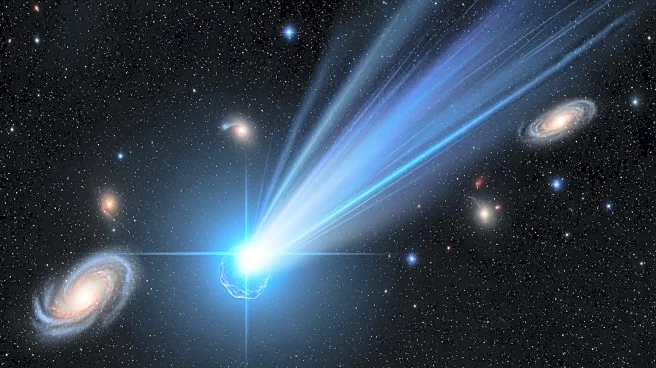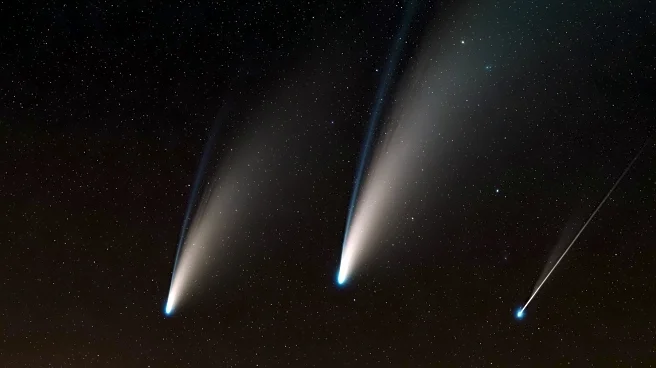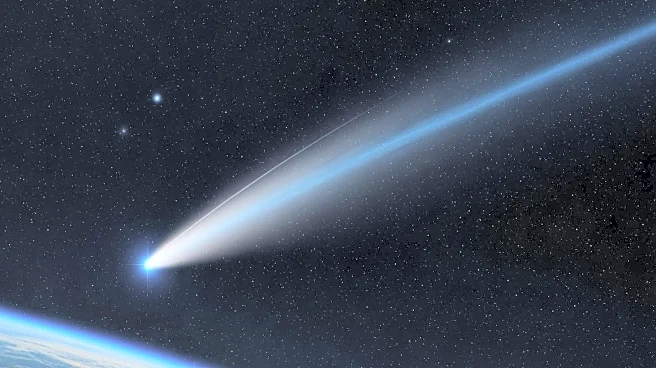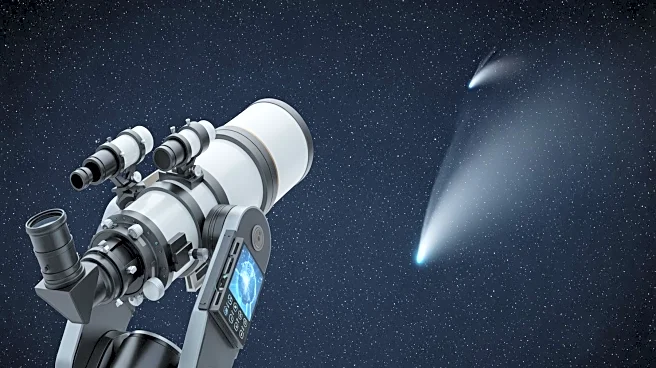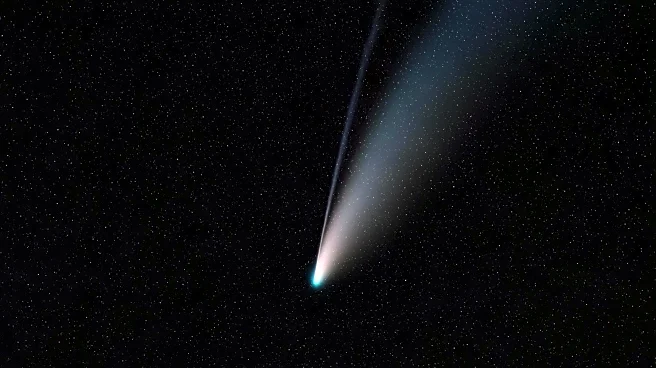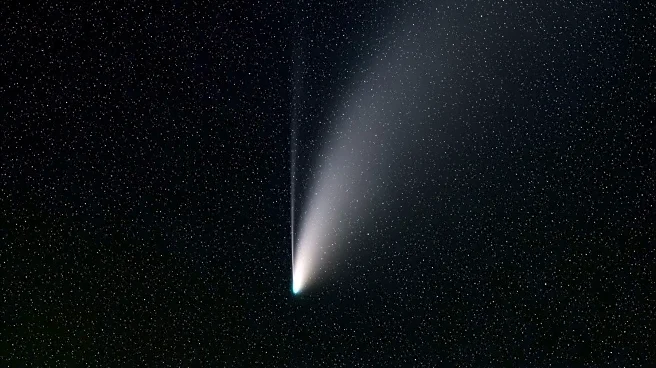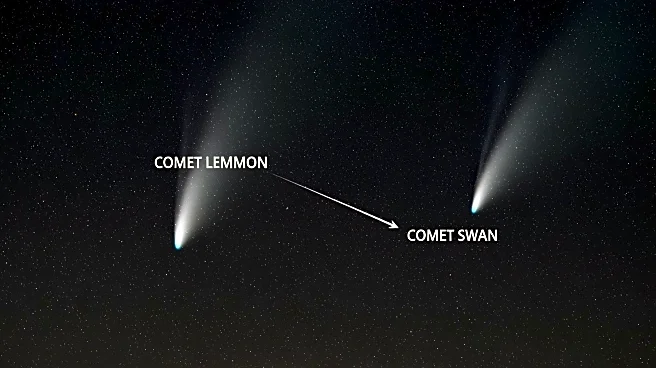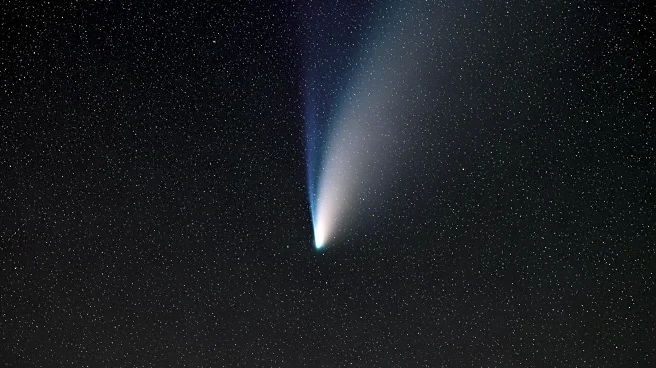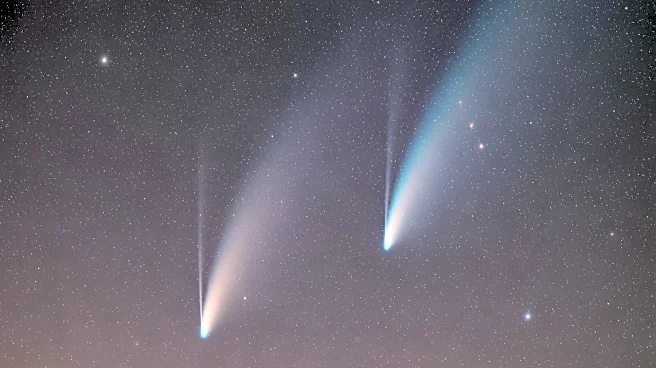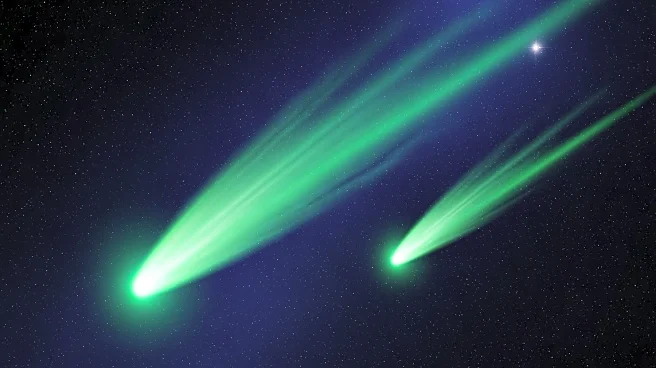What's Happening?
Comet C/2025 A6 (Lemmon) is set to reach its peak brightness on October 21, coinciding with its closest approach to Earth at 28.6 million miles. Discovered by the Mount Lemmon Survey, the comet is currently
visible in the northwestern sky and is expected to brighten significantly, potentially becoming visible to the naked eye from dark sites. The comet's orbital period will decrease from 1,350 years to 1,150 years after its perihelion passage on November 8.
Why It's Important?
The visibility of Comet Lemmon offers a unique opportunity for both amateur and professional astronomers to observe and study a celestial body that will not return for over a millennium. This event can increase public interest in astronomy and provide valuable data for scientists studying cometary behavior and composition. The comet's close approach allows for detailed observation, contributing to our understanding of the solar system's dynamics.
What's Next?
Observers are encouraged to view the comet during its peak brightness, with the best viewing times being shortly after sunset. Astronomy enthusiasts and professionals will be monitoring the comet's progress and behavior, contributing to ongoing research and public engagement in space science.
